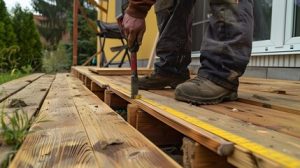A webpage’s link juice, or its link equity, is one of the most important aspects of SEO. This ranking power can come from both external backlinks and internal links within a website.
Positioning a website as a trusted resource for a particular topic is a powerful way to generate link juice. Examples include writing whitepapers, curating helpful resource lists, and contributing to industry blogs. Visit https://www.rankboss.com/ to learn more.

Link building is a critical component of search engine optimization (SEO) and one of the most influential factors when it comes to determining a website’s ranking. It involves acquiring hyperlinks from other websites to your own, which tells the search engines what pages are relevant and authoritative. It is a form of digital marketing that requires both creativity and hard work to be successful. If done correctly, it can boost your website’s rank and increase organic traffic.
It’s important to remember that just because a link is on a high-authority website doesn’t mean it will boost your SEO. The quality of the content and the relevance to your niche are more important than the domain authority of the site hosting the link. Furthermore, links from low-quality websites may negatively affect your SEO. This is why it’s essential to build links that are relevant and contextually aligned with your website, products, and services.
A great way to increase your visibility is by creating valuable content that your target audience will share with their friends and colleagues. This will help you establish your brand’s reputation and authority in your industry, and it will also improve your website’s search rankings. Additionally, it’s a good idea to optimize your content for mobile users, as they make up the majority of online traffic.
Despite the rumors that link building is dead, it’s still an effective tool for improving your search engine rankings. However, it’s important to use it responsibly and avoid spammy tactics. In order to improve your SEO, create high-quality content that is helpful to your target audience and only buy links from reputable sources. In addition, it’s best to focus on long-tail keywords with clear commercial intent, rather than chasing after high-volume keywords that are unlikely to attract qualified traffic. These tips will help you build a sustainable and effective link-building strategy that will continue to provide results in the future. Whether you’re a novice eager to learn the basics or a seasoned SEO expert looking to hone your skills, these ebooks can help you master the fundamentals of link building.
Anchor text
Anchor text is the clickable text in a hyperlink, usually highlighted blue and underlined on most websites. These links physically connect two different online web pages, and the anchor text tells search engines and users what each page is about. It also helps determine the relevance and authority of the linked webpage. In addition, the anchor text is crucial for user experience because it allows them to navigate your website with ease. It can even have a direct impact on the ranking of your site, especially for certain keywords.
Link building is a crucial part of SEO, but the anchor text you use can make or break your rankings. For example, using the word “click here” as your anchor text is likely to send a poor signal to search engines. This can cause your website to lose rankings for that keyword, which is why it’s important to use a variety of anchor texts.
When choosing anchor texts, it is important to consider your target audience. The key is to use natural and descriptive anchor text, which sends relevancy signals to search engines. A descriptive anchor text is one that matches the subject of the linked page and fits seamlessly into your content. Exact match anchor texts are the most effective, but they should be used sparingly. If you use them too often, Google may see it as over-optimization and penalize your site.
In addition to influencing keyword ranking, anchor text can also influence your website’s user experience and click-through rate. For example, using a brand name in your anchor text will help search engines understand your brand better and increase the likelihood of click-through. In addition, using branded anchor text is good for user experience because it gives readers an idea of what to expect from the linked page.
Another important factor to consider when choosing anchor text is its readability. For example, if your anchor text is long and complicated, it will be harder for users to follow. It can also be confusing for users who use screen readers or text-to-speech software. In these cases, a shorter and simpler anchor text will be more effective.
Dofollow or nofollow
Dofollow links, identified by the “rel=dofollow” attribute in their HTML code, are a crucial part of any SEO strategy. They act as a conduit for passing link equity (PageRank) and directly impact search engine rankings. When a reputable website links to your content with a dofollow link, it’s like giving you a vote of confidence and signaling to search engines that your content is authoritative and valuable. Dofollow links can boost your rankings and increase organic traffic, as well as promote brand awareness and establish your authority within your niche.
Nofollow links, on the other hand, don’t pass link equity but can still help you with your SEO efforts. They are often used in forums, social media posts, and other user-generated content. They’re also commonly found in blog comments and other editorial links. Nofollow links can still bring value to your SEO efforts by driving referral traffic and diversifying your link profile.
The traditional gap between the impact of dofollow and nofollow backlinks has been narrowed, thanks to Google’s 2019 update. Although nofollow backlinks have traditionally had no impact on search engine optimization, they’re now treated as hints by Google and may affect rankings depending on context and relevance.
As a result, it’s important to prioritize earning high-quality dofollow links from reputable websites for the greatest SEO benefits. This can be done by focusing on guest blogging, offering professional quotes, and actively seeking out link opportunities. By establishing a diverse backlink portfolio, you can ensure that your website is resilient to algorithm changes. A balanced mixture of dofollow and nofollow backlinks will maximize the benefits that each type offers.
Relevance
A website’s relevance in the digital landscape is a key factor when it comes to search engine optimization. Link juice from contextually relevant pages can elevate a website’s rankings and visibility, making it a go-to resource for users looking for the information they are searching for. This heightened visibility makes it easier for brands to establish credibility and authority in their respective niches. However, achieving and maintaining this status is not an easy task. It requires a rigorous strategy that includes ethical links, periodic backlink audits and disavowals, and an understanding of how to properly harness link juice.
In the early days of Google, the PageRank algorithm essentially treated links as votes for webpages in popularity contests. The more and higher-quality votes a page received, the more important it was considered. As a result, SEOs developed various philosophies and tactics for moving and distributing PageRank among their sites/pages. While many of these tactics were once effective, they have since been rendered obsolete by Google’s updates and other algorithm changes.
To maximize the impact of your link equity, focus on getting high-quality, dofollow links from authoritative sources. This can be done through various tactics, including writing guest posts on other websites, earning mentions in online publications, and participating in industry events. It’s also important to avoid links that are nofollowed, as they will not pass any link equity.
The number of outgoing links on a page also impacts link equity. Ideally, outgoing links should be limited to avoid excessive link spam. In addition, it’s a good idea to use contextually-relevant keyword phrases in your outgoing links to increase their value. This way, the search engines will consider your outgoing links as valuable to users and rank them accordingly.
The amount of link juice a website has can be measured by using an online tool, such as Seobility’s Backlink Checker. This tool shows the PageRank of a particular page and its competitors, and provides an indication of the strength of each page’s backlink profile. In addition, it can also reveal whether a site is suffering from any toxic backlinks.

